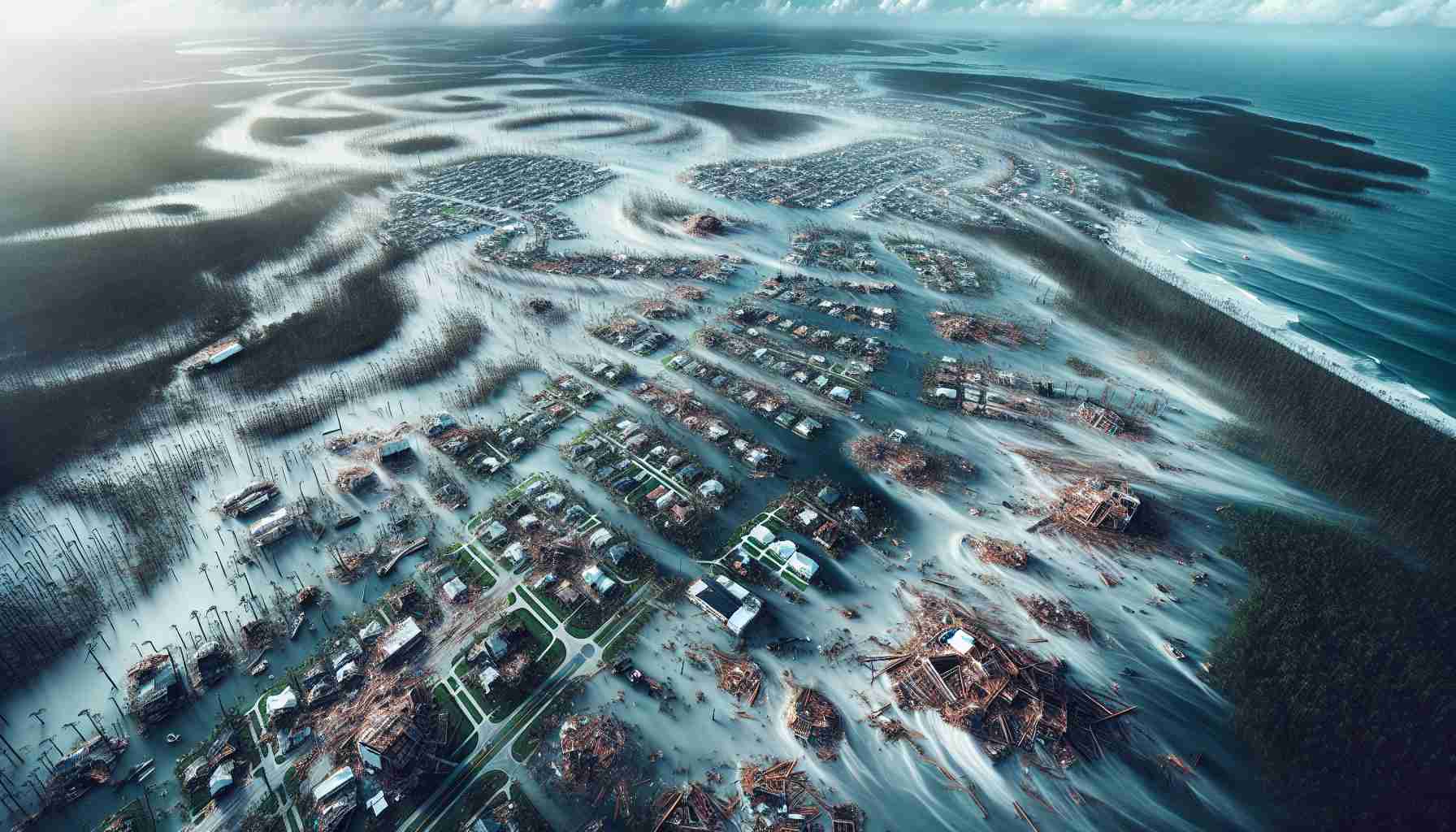
Hurricane Milton wreaked havoc across central Florida, unleashing powerful winds and causing widespread destruction. The latest satellite imagery from the National Oceanic and Atmospheric Administration (NOAA) reveals the hurricane’s dramatic impact, showcasing a captivating display of lightning that highlighted the storm’s intensity. This visual documentation demonstrates the incredible scale of the hurricane as it made landfall.
Milton approached Florida’s west coast, making its entrance near Siesta Key as a formidable Category 3 hurricane. The satellite images depict the storm’s well-defined eye, surrounded by extensive cloud formations that extend for miles. The NOAA footage, updated every 30 seconds, captures the dynamic changes occurring within the storm, emphasizing bursts of lightning activity in southern Florida where tornadoes were reported.
As Milton advanced across the state, it unleashed devastating winds reaching speeds of up to 120 miles per hour. The aftermath has been catastrophic, with extensive structural damage, uprooted vegetation, and nearly two million residents left without electricity. Local authorities, meteorologists, and emergency teams are diligently analyzing the storm’s data to navigate the ongoing crisis and assist those affected.
Although Milton has diminished in strength and is now classified as a Category 1 hurricane, its impact lingers, and recovery efforts are underway across the impacted regions, as communities begin to assess and rebuild from the terrible destruction.
Hurricane Milton’s Path of Devastation: A Comprehensive Overview
Hurricane Milton has emerged as one of the most devastating storms to strike Florida, leaving a trail of destruction and prompting a massive response from emergency services and state officials. As communities grapple with the aftermath, several key questions arise regarding the storm’s impact, recovery efforts, and the challenges faced in rebuilding.
What were the specific areas most affected by Hurricane Milton?
The hurricane primarily impacted central Florida, with specific damage reported in areas like Sarasota, Manatee, and Charlotte counties. These regions experienced the brunt of the winds and flooding, with coastal areas facing storm surges that exacerbated the destruction. In addition, inland counties, including Polk and Orange, reported significant wind damage and flooding, which compounded recovery challenges for many residents.
How are local authorities addressing the immediate needs of the affected populations?
Local governments have activated emergency response protocols that include the establishment of shelters, distribution of food and water, and restoration of essential services. Emergency personnel are conducting door-to-door assessments to identify individuals in need of assistance, particularly the elderly and those with disabilities.
What are the key challenges in the recovery process?
One significant challenge is the restoration of power, with nearly two million residents initially left in the dark. Utility companies are mobilizing crews from across the southeastern U.S. to expedite restoration. Moreover, the recovery efforts are also hampered by debris removal and road clearing, which are necessary for the ceaseless distribution of aid. Another challenge is managing claims and insurance adjustments for property damage, as many homeowners face difficulties navigating insurance processes while dealing with immediate recovery needs.
Are there any controversies surrounding the storm’s preparation and response?
Yes, some controversies have emerged regarding the timeliness and effectiveness of evacuation orders. Critics argue that the warnings were not communicated effectively, which may have contributed to residents being unprepared for the intensity of the storm. Additionally, discussions about climate change and its role in exacerbating the frequency and strength of hurricanes have reignited debates among policymakers and scientists, raising questions about future preparedness.
What are the advantages and disadvantages of the current recovery efforts?
The advantages of the current recovery efforts include the mobilization of federal disaster assistance, which provides essential funding for rebuilding infrastructure. Local organizations and volunteers have rallied to assist those in need, fostering a sense of community solidarity. However, the disadvantages include potential bureaucratic delays in accessing funds and resources, and the risk of long-term displacement for families whose homes have been severely damaged.
As Florida moves forward from this hurricane, ongoing analysis and adaptation to better prepare for future storms will be critical for safeguarding communities. The resilience shown in the face of such calamity will be vital in rebuilding and understanding the evolving climate landscape.
For further information on hurricane preparedness and response, you can visit FEMA and NOAA.



